Mining Riches on the Ocean Floor
Air Date: Week of July 28, 2023

The Clarion-Clipperton Zone stretches from southeast of Hawaii all the way to Mexico, averaging a depth of three miles. (Photo: NOAA Office of Ocean Exploration and Research, Deepwater Wonders of Wake, public domain)
In the depths of the sea, parts of the ocean floor are covered with manganese nodules. These contain valuable minerals that could be extremely useful for renewable energy resources, like electric car batteries. But mining these nodules could prove hazardous for deep ocean biodiversity, Professor Eugene Gallagher from the University of Massachusetts Boston explains to host Steve Curwood.
Transcript
CURWOOD: Parts of the deepest oceans are carpeted with manganese nodules that also contain many other valuable minerals, and for decades the allure of mining riches has colored international efforts to protect the seas. Technological challenges and various procedural provisions linked to 1982 Law of the Sea Treaty have prevented exploitation of the seabed metals so far, but now a time limit has expired for a defacto mining moratorium under the treaty’s International Seabed Authority. In 2021 the Pacific Island nation of Nauru applied for a mining permit on behalf of a Canadian company, a move that gave the Seabed Authority two years to make any seabed mining rules it would enforce. But in July that deadline came and went, and the seabed authority has asked for more time. So far, the company is waiting for rules and not moving ahead to begin mining. The manganese nodules could be extremely useful for metals needed for renewable energy resources. At the same time the largely unexplored deep ocean is seen by scientists as a vulnerable hot spot of diversity that could be hurt by mining. Here to tell us more is Professor Eugene Gallagher at the University of Massachusetts Boston. Welcome to Living on Earth, Dr. Gallagher!
GALLAGHER: Good to be here.
CURWOOD: Now please describe for us, professor, what is the Clarion-Clipperton Fracture Zone, and talk to me about the ecosystem, what's it like there?
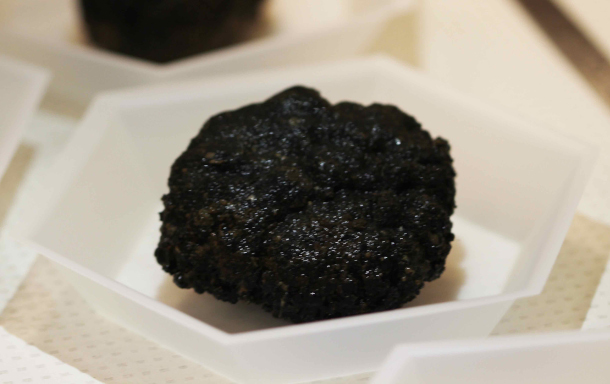
Manganese nodules, found in the Clarion-Clipperton Zone, take millions of years to form and contain coveted metals like cobalt. (Photo: DeepCCZ expedition, NOAA, public domain)
GALLAGHER: Yeah, the Clarion-Clipperton Zone is huge. It's a zone located between the southeast of Hawaii stretching all the way to Mexico. If you were to draw a line from California all the way to Georgia, it's equivalent to the whole southern part of the United States. The depth is on average about three miles deep, and it has the highest concentration of manganese nodules of any area in the world's ocean. And these are objects about the size of small potatoes, some of them as large as an Idaho potato. The nodules are so dense in some areas that they look like a New Bedford cobblestone road. They pave the deep sea. And the animals that live there, most of them are small. And one of the surprises in benthic ecology is that the abyssal plains, people thought that virtually nothing could live there. But then in 1967, two Woods Hole Oceanographic scientists, Hessler and Sanders, discovered that the species diversity is very high in the abyss. Much higher than what you would get in the Gulf of Maine or on the continental shelf. And the species richness in the Clarion-Clipperton Zone is about the highest of any abyssal area, you know, in the world's oceans. It has very little food input. So although the number of species is large, the abundance of animals is quite small. So in a quarter meter squared box core, in Massachusetts Bay, we would get 20,000 animals. In the Clarion-Clipperton Zone, you would find fewer than 100 individuals, but of those 100 individuals, you may have 70 species. So it's low abundance, but incredibly high species richness.
CURWOOD: So why are people in the international community so interested in mining in this area? This has been going on for years, I think back in the 70s, Howard Hughes was trying to build machines to get down there to get the nodules. What's the attraction of these nodules?
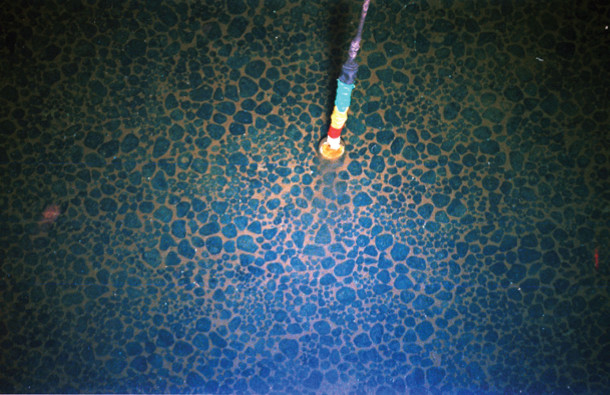
In some parts of the Clarion-Clipperton Zone, manganese nodules are so abundant that they “pave” the seafloor. (Photo: USGS.gov; Article by Hein, et al., 2015, Ore Geology Reviews; photo taken during a research cruise in 2000, public domain)
GALLAGHER: Yeah, things have changed a little bit. Back in the 1970s, when there were several US companies planning to mine the Clarion-Clipperton Zone, you know, the big issue was getting nickel. But now in the age of global warming, there is a huge effort to increase the number of rechargeable batteries, to increase the number of solar panels and to increase the number of wind turbines. And all of those require high concentrations of manganese, nickel, cobalt, especially. Cobalt is crucial for rechargeable batteries. If we want to meet our needs for rechargeable batteries, particularly in automobiles and trucks, the supply of cobalt is going to get critically scarce within a decade. And then there are rare earth elements, tellerium and neodymium, the key element needed for wind turbines. And one wind turbine will require 4,000 pounds of neodymium in order to run. And so all of these metals are scarce in terrestrial supplies. And largely the cobalt is under the control of the People's Republic of China. But they are abundant in the Clarion-Clipperton Fracture Zone manganese nodules. The supply of cobalt in the Clarion-Clipperton Fracture Zone is something like 40 times the entire terrestrial supply of cobalt.
CURWOOD: So, if mining companies do get access down there in the deep sea, what are some of the potential consequences of the mining activity? Why are scientists and other stakeholders sounding the alarm about this prospect?
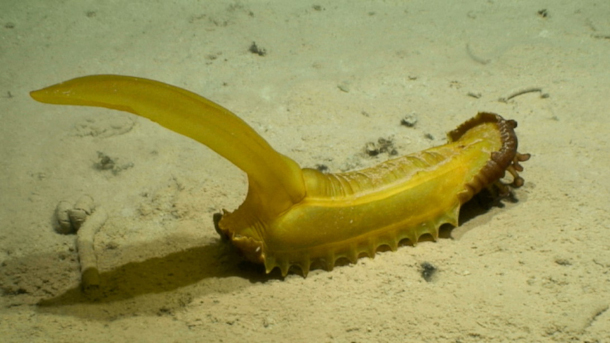
Some scientists are concerned that mining activity will wipe out the diverse species that live in the CCZ, like the Psychropotes longicauda, nicknamed the “Gummy Squirrel.” (Photo: DeepCCZ expedition, NOAA, public domain)
GALLAGHER: The area has a really low sedimentation rate. So there's only about a millimeter to three millimeters per 1000 years. And these collecting devices, which they have different technologies, but one of them is essentially vacuum cleaning up the nodules from the surface of the Clarion-Clipperton Zone. First of all, they're going to wipe out the nodules and all of the associated fauna. And the nodules take anywhere from 1 million to 10 million years to grow. So they are not a sustainable resource by any means. They're going to be gone and all of the animals associated with them will be gone. But then the big worry is that it's going to resuspend sediment that may wipe out a much larger area than the area being mined. And some estimates would have it that it's going to wipe out an area anywhere between three and ten times the area that is being mined. And we simply don't know how well many of the animals adapted for one millimeter per thousand year sedimentation are going to be able to tolerate one to three millimeter per year sedimentation from active mining.
CURWOOD: You've studied these regions, this ecology, literally for decades. In your opinion. To what extent should we be looking to mine these resources, or should we be just simply saying, guess what, we need to leave this alone?
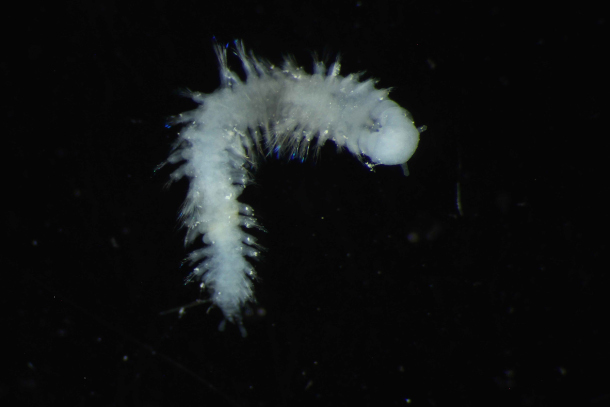
Many of the species in the CCZ were recently discovered, like this new species of worm still awaiting its official name. (Photo: NOAA DeepCCZ Partners: University of Hawaii (US), Natural History Museum (UK) and University of Gothenburg (Sweden))
GALLAGHER: There are marine biologists that have made the case that we should not mine these areas at all, that they are all hotspots of biodiversity in the abyss. They're not only high species richness, but also, we don't know how unique the fauna is in each area. But on the other hand, we desperately need to control the increase in atmospheric CO2 concentrations. And the major ways for doing that are electric batteries, wind power, and solar power. And all three of those require heavy metals. So as a compromise, many deep sea scientists have mapped out a plan where there might be a 10 year moratorium on mining so that we can do additional work, especially in one area. And that is to increase the distribution and the type of areas that are called APEIs, Area of Particular Environmental Interest. And these are like wilderness preserves that we have in the United States. These are areas that will not be mined. But some of the research that's been done on these areas indicate that it doesn't represent the true variety of habitat types in the Clarion-Clipperton Zone, and that we need more of them. And certainly, we need to to study them more to find out whether they are indeed going to act as refuge, as wilderness areas, to preserve the diversity of this large region of the deep sea.
CURWOOD: What's the middle ground on this issue?

Cobalt, found in manganese nodules, plays a critical role in electric cars’ rechargeable batteries. (Photo: Ivan Radic, Flickr, CC BY 2.0)
GALLAGHER: Yeah, there are, several things have been advocated. We need the metals right now. And so one of the solutions is to develop what's called a circular economy, to develop the technology to recycle metals. And people have done analyses of that. And the unfortunate thing is, in the next 20 to 30 years, we're going to be building up, you know, huge numbers of vehicles and wind turbines and solar panels, and there's going to be very little material to recycle. The other huge option is to have the chemists come up with a different technology for batteries, and for magnets and solar panels that don't require the heavy metals. And in particular, there have been some advances to reduce the amount of cobalt required in rechargeable batteries. You know, there are 20 pounds of cobalt in a typical car battery. And these new batteries that are being developed for large pickups have hundreds of pounds of cobalt for the cathodes and their rechargeable batteries. You know, if they come up with a new chemical system for developing charging new batteries to eliminate the need for so much cobalt, that would be a huge benefit. But cobalt turns out to be the really critical metal. It's going to be in such scarce supply with so little material available from recycling, and the technologies haven't been developed to replace cobalt, that within 10 to 20 years, there will be a desperate need for cobalt in the world if we're going to reduce atmospheric CO2concentrations.
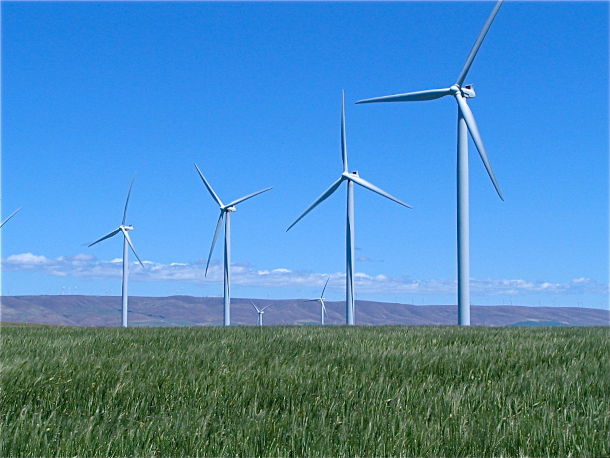
One wind turbine can require up to 4,000 pounds of neodymium, one of the rare earth elements found in manganese nodules. (Photo: Shawn Meng, Oregon Department of Agriculture, Flickr, CC BY-NC-ND 2.0)
CURWOOD: Before we go, share your outlook on this, you as a scientist, concerned about the environment, concerned about the biological diversity there. How optimistic are you that this will get resolved in a way that works for people and nature?
GALLAGHER: Well, the thing that concerns me most is that we may not know what the effects are. You know, this is an area that is vast. I was doing the back of the envelope calculation, and you've got an area about the size of the southern part of the entire United States. And the entire area that has been quantitatively sampled, with the species identified, would fit in a one quarter of a basketball court. It's just a tiny area. And one of the tragedies in this is, we would have had many of the answers, except the United States completely eliminated its budget for assessing the environmental effects of deep sea manganese nodule mining. They had a program starting in the 1970s through 1994, called DOMES, the Deep Ocean Mining Environmental Studies. And it was completely zeroed out. And the tragedy of that is, is that when you're analyzing the samples from this area, it takes the world's best taxonomists, you know, when 60% of the species are represented by single individuals and most of those are new to science. It requires the world's best taxonomists, and they all, they all lost their funding. It's very difficult in the United States to even find the scientists who are able to identify the species in the Clarion-Clipperton Zone. And it's a real tragedy, that we'll be going ahead with the mining and we won't know the effects and we won't have the ability to determine the effects of the mining.

Eugene Gallagher is an Associate Professor of Benthic Ecology and Statistics at the University of Massachusetts Boston School for the Environment. (Photo: Courtesy of Eugene Gallagher)
CURWOOD: Eugene Gallagher is a professor of benthic ecology and statistics at the University of Massachusetts Boston. Gene, thanks so much for taking the time with us today.
GALLAGHER: Well, thank you.
CLARIFICATION: Nauru sent a letter of intent in 2021 that triggered the rule making deadline, but to date has not filed a full application.
Links
International Seabed Authority | “Home Page”
International Seabed Authority | “Clarion Clipperton Fracture Zone: Exploration Area”
Smithsonian Magazine | “These Mysterious Deep Sea Creatures Live in a Potential Mining Zone”
NOAA | “Deep CCZ Mining Interests in the Clarion-Clipperton Zone”
Living on Earth wants to hear from you!
Living on Earth
62 Calef Highway, Suite 212
Lee, NH 03861
Telephone: 617-287-4121
E-mail: comments@loe.org
Newsletter [Click here]
Donate to Living on Earth!
Living on Earth is an independent media program and relies entirely on contributions from listeners and institutions supporting public service. Please donate now to preserve an independent environmental voice.
NewsletterLiving on Earth offers a weekly delivery of the show's rundown to your mailbox. Sign up for our newsletter today!
 Sailors For The Sea: Be the change you want to sea.
Sailors For The Sea: Be the change you want to sea.
 The Grantham Foundation for the Protection of the Environment: Committed to protecting and improving the health of the global environment.
The Grantham Foundation for the Protection of the Environment: Committed to protecting and improving the health of the global environment.
 Contribute to Living on Earth and receive, as our gift to you, an archival print of one of Mark Seth Lender's extraordinary wildlife photographs. Follow the link to see Mark's current collection of photographs.
Contribute to Living on Earth and receive, as our gift to you, an archival print of one of Mark Seth Lender's extraordinary wildlife photographs. Follow the link to see Mark's current collection of photographs.
 Buy a signed copy of Mark Seth Lender's book Smeagull the Seagull & support Living on Earth
Buy a signed copy of Mark Seth Lender's book Smeagull the Seagull & support Living on Earth

